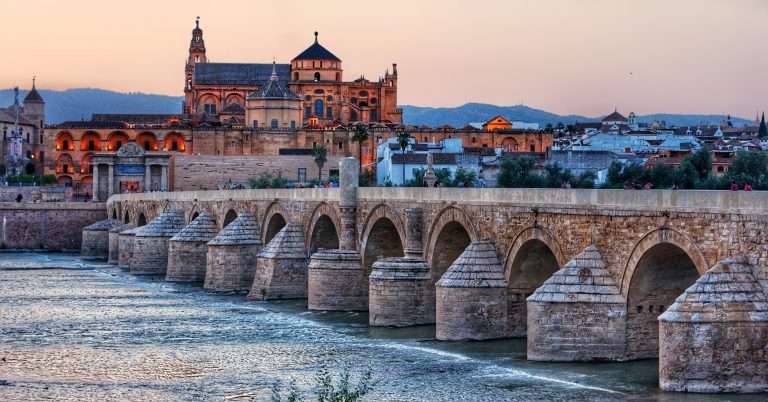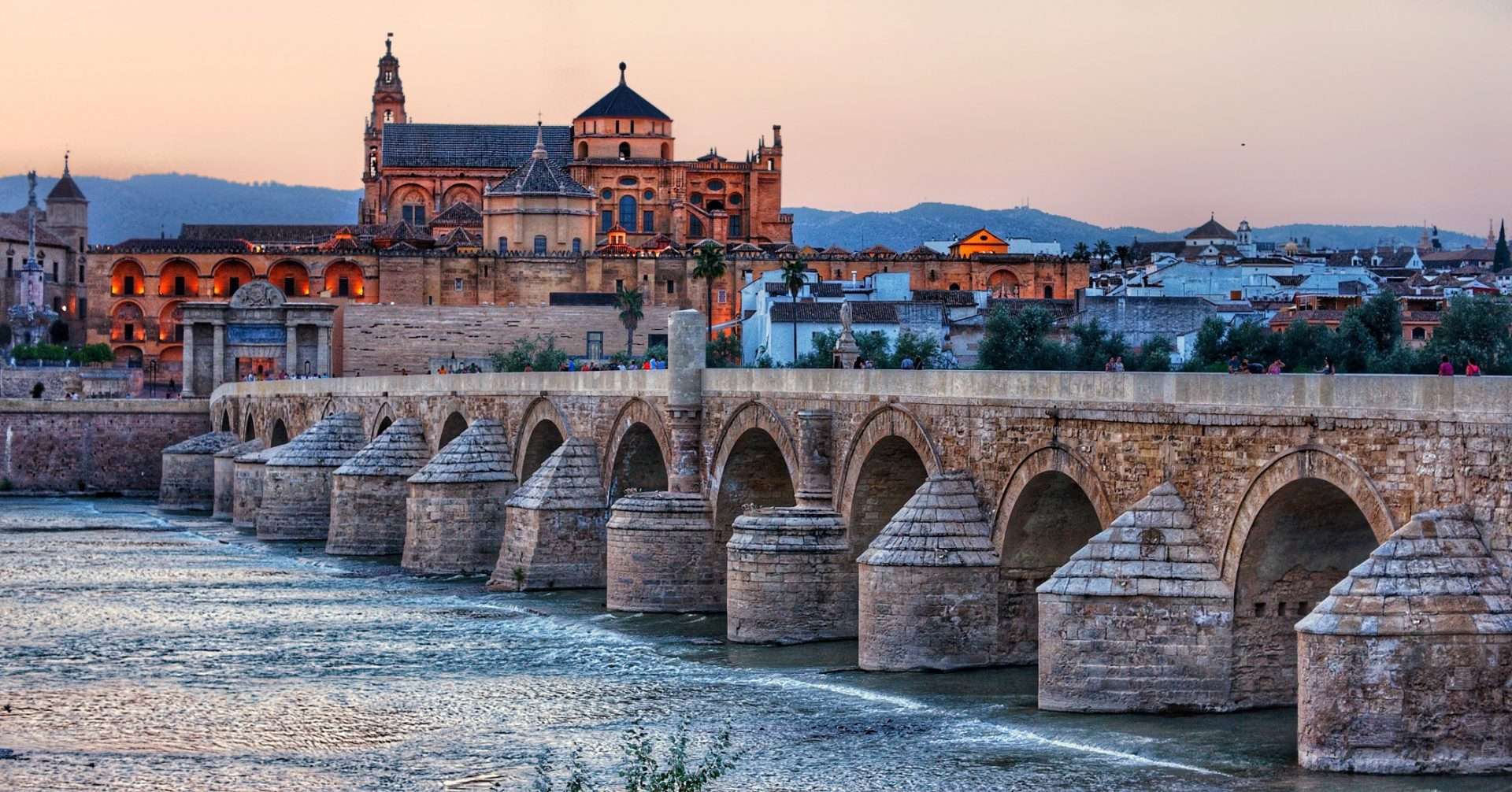What to do in Cordoba, Spain?
Cordoba may still be an underrated city, but it has so much to offer that should not be overlooked. While it's gradually gaining popularity among tourists, many still opt for other cities. However, we want to emphasize why Cordoba deserves a spot in your travel itinerary when visiting Spain!
The city's undeniable charm brings visitors back time and time again. Its narrow streets and whitewashed walls create a refreshing atmosphere during the hot summer months, providing a welcome escape and cool air. Locals take great pride in decorating the city, adorning walls with colorful flowers and maintaining open patios and tiny balcony gardens that encourage you to look up and marvel. It's worth mentioning that the locals compete with each other each year, making it possible for lucky visitors to explore some of these enchanting patios that are open to the public!
In fact, Cordoba has the potential to become one of your favorite cities in Europe—yes, we're not kidding! We challenge you to experience it for yourself and see how much you'll fall in love with its unique charm and atmosphere.
Situated in the southern Spanish region of Andalusia, Cordoba with just 350 000 population of Cordoba Spain offers a distinctive cultural experience. The city is home to numerous plazas, including those with lush green spaces adorned with fountains and trees. These inviting plazas provide tranquil spots to relax and soak in the ambiance while enjoying the beauty of the surroundings.
So, don't underestimate Cordoba's allure. It's a city that has so much to offer, and we highly recommend adding it to your travel plans. Discover its captivating charm, immerse yourself in its rich heritage, and savor the unique experiences that await you in this hidden gem of a city.
And before we dive into our reviews on the Best Hotels in Cordoba, Spain with Spa in Andalusia Region, let's not forget about the local snack! Yes the famous Cordoba cake, "Pastel Cordobes"! This delicious treat is a must-try during your visit, adding to the city's culinary delights. Visit Cordoba Spain already now and dont miss out of great things to do in Cordoba!
Where to stay in Cordoba, Spain?
While Cordoba is not a small city, we have found only two hotels with Spas that we genuinely believe are worth recommending based on our honest review. Although there may be other hotels in the area, we feel that these two establishments have set the bar high in terms of their standards and quality.
01.
Hospes Palacio del Bailio
Every aspect of the hotel's decor has been thoughtfully designed to exude elegance. You'll discover a seamless fusion of past and present in the rooms of Hospes Palacio del Bailio, where even original wall paintings can be found. The staff commitment to providing a spa and wellness experience is evident in the luxurious bathrooms that await you.
Palacio del Bailio offers ample space for relaxation. You can unwind amidst the beauty of the flower garden or on the sun terrace, surrounded by fragrant orange trees. For an exclusive pampering session, indulge in a variety of treatments at the hotel's renowned Bodyna Spa.
Once you experience the harmonious blend of First Century Roman Ruins with modern luxury and comfort, you'll be eagerly anticipating your return to this enchanting palace. The culinary delights, access to Roman baths at the spa, and invigorating massages will leave you completely satisfied.
While the hotel may not feature a gym, fret not. You can still give your body a good workout in the pool, offering a refreshing and invigorating experience.
This hotel is 500m away from the city center.
Wellness Facilities
Indoor & outdoor pools
Pool/beach towels
Sun loungers or beach chairs
Sun umbrellas
Wellness
Fitness/spa locker rooms
Spa/wellness packages
Spa lounge/relaxation area
Spa facilities
Body wrap
Body scrub
Body treatments
Pedicure
Manicure
Make up services
Facial treatments
Beauty Services
Sun umbrellas
Sun loungers or beach chairs
Hot spring bath
Hot tub/Jacuzzi
Massage
Spa and wellness centre
Solarium
02.
Hospedería Baños Arabes de Córdoba Dos
This hotel allows you to close the door after a long day of exploring Cordoba and enjoy a calm and relaxing oasis with incredible facilities. Hospedería Baños Árabes de Córdoba Dos offers air-conditioned rooms, a terrace, and a spa with access to the Arabic bath and wellness center.
The spa is beyond praise, with stunning rooms and gorgeous pools featuring hot water. I was extremely pleased! The hotel is situated in a quiet location, making it very convenient for exploring the area on foot. The fact that the hotel provides bathrobes and offers spa and massage services is a bonus. The spa itself is beautiful and has a great atmosphere. The massages are exceptional and incredibly relaxing.
This hotel is 800m away from the city center.
Wellness Facilities
- Spa/wellness packages
- Hot spring bath
- Spa and wellness centre
- Sauna
What to do in Cordoba, Spain?
01.
Journey into History and Harmony: The Mosque-Cathedral of Cordoba
The mind-blowing architecture of the Cordoba Mosque holds a rich history and cultural heritage that is truly remarkable. Originally, it was a church that was later taken over by Muslims, who constructed a grand mosque in its place. This unique blend of religious influence is a testament to the cultural exchange that took place during this time.
The Cordoba Mosque, also known as the Great Mosque of Cordoba or the Mezquita, is an iconic structure located in Cordoba, Spain. It has been recognized as a UNESCO World Heritage Site and stands as one of the most extraordinary examples of Islamic architecture.
Construction of the mosque began in the 8th century when Cordoba was under Muslim rule. It was built on the site of a Visigothic church and underwent expansions and renovations over the centuries. The result is a stunning fusion of Islamic, Byzantine, and Visigothic architectural styles.
The mosque's hypostyle prayer hall is a sight to behold, featuring a vast array of columns and horseshoe arches. The most famous section of the mosque is the breathtaking "forest" of over 850 columns, crafted from exquisite materials such as jasper, marble, and granite.
The mihrab, an ornate niche indicating the direction of Mecca for prayer, is intricately decorated with mosaics, marble, and gilded stucco. Above the mihrab, a magnificent dome was added in the 10th century by the Caliph Al-Hakam II, adding to the mosque's grandeur.
Throughout its history, the mosque underwent expansions and modifications under various rulers. One significant transformation occurred after the Christian Reconquista of Cordoba in 1236 when it was converted into a Catholic cathedral. This conversion involved the incorporation of Christian elements, including the construction of a Renaissance-style cathedral nave within the mosque's interior.
Outside the mosque, visitors can explore the enchanting Patio de los Naranjos (Courtyard of the Orange Trees), a serene courtyard that dates back to the early Islamic period. The courtyard features fountains, fragrant orange trees, and provides a tranquil space to appreciate the beauty of the surroundings.
The Cordoba Mosque stands as a testament to the architectural and cultural exchange that took place between Islamic and European civilizations during the Middle Ages. It is a remarkable symbol of the rich history and influences that have shaped the city of Cordoba and continues to captivate visitors from around the world
02.
Flamenco in Cordoba, Andalusia region?
Cultural aspects that are truly unique can often be found in smaller cities like Cordoba, as larger cities tend to have a busier pace of life that can sometimes hinder the full celebration of these traditions. That's why local communities in cities like Cordoba excel in creating an atmosphere that truly embraces the authenticity of festivals. Fortunately, there are plenty of festivals to enjoy in this region, which is Andalusia. Therefore, it possesses its own distinct culture and traditions.
In Cordoba, you can immerse yourself in the vibrant local celebrations that showcase the city's rich cultural heritage. These festivals provide an opportunity to witness traditional dances, music, cuisine, and customs that have been passed down through generations. The smaller city setting allows for a more intimate and genuine experience, where you can truly connect with the local traditions and engage with the community.
Andalusia, as a region, holds a special place in terms of its unique culture and traditions. From flamenco music and dance to exquisite Moorish architecture, Andalusia offers a rich tapestry of cultural experiences that sets it apart from other regions. Exploring the streets of Cordoba, you'll encounter the echoes of its history and the distinct blend of influences that have shaped its identity.
03.
Alcázar de los Reyes Cristianos the Castle of the Christian Monarchs
Another must-visit when you are in Cordoba is the experience of being among the ruins and letting your imagination run wild as you envision its former glory and construction.
As you explore, you'll come across delightful fruit gardens that not only provide a refreshing atmosphere but also create a cozy ambiance. Additionally, this presents an excellent opportunity to capture beautiful photos of the surroundings. So, immerse yourself in history and embrace the captivating scenery.
You'll encounter spectacular water fountains adorned with swimming fish in the crystal-clear flowing water. The sight is truly mesmerizing and adds to the allure of the place. Furthermore, decorative trees offer welcome shade on hot summer days, providing a respite from the sun's heat. Alongside, sculptures dotting the gardens invite you to transport yourself back in time to when these magnificent gardens were first created
04.
Did you ever heard about Jamón ibérico ?
Also known as Iberian ham, originates from Spain. It is a type of cured ham made from the meat of the black Iberian pig, a breed native to the Iberian Peninsula. The production of jamón ibérico is particularly associated with the southwestern region of Spain, including areas such as Extremadura, Andalusia, and parts of Castile and León.
The black Iberian pig is renowned for its ability to store fat within its muscle tissue, resulting in a marbled texture and distinctive flavor in the meat. These pigs are typically raised in specific regions of Spain, where they are allowed to roam freely and feed on a diet primarily composed of acorns (montanera) during the final stage of their lives. This acorn-rich diet contributes to the unique taste and quality of jamón ibérico.
The production process of jamón ibérico involves several stages, including salting, drying, and aging. The hams are cured for an extended period, often ranging from one to three years or even longer. This careful and time-consuming process allows the meat to develop its characteristic flavor and aroma.
While jamón ibérico is predominantly associated with Spain, it has gained international recognition and popularity due to its exceptional taste and quality.
05.
Olive Oil Delight: Experience the Rich Flavor just by squeezing Ripe Olives with your hand and Savoring the Aroma
Who doesn't love high-quality olive oil? It's a universally cherished ingredient. Let me share some insights about Cordoba, a city renowned for producing exceptional olive oil. The region's ideal climate effortlessly yields top-tier olive oil with minimal effort.
Cordoba holds the distinction of being a primary hub for olive oil production. When you visit Cordoba, I highly recommend bringing back a bottle or two of this liquid gold. To enrich your experience, consider visiting an olive oil farm, where you can witness the meticulous process of capturing and extracting one of the finest olive oils available. Don't miss the opportunity to savor its exquisite taste!
Extra Virgin Olive Oil, or EVOO for short, is one of the highest quality olive oils available. Interestingly, if you happen to be in Cordoba, Spain, you're in luck because this is precisely where this type of olive oil is produced. While we won't delve into extensive details about olive oil here, it's important to note that this oil is cold-pressed and has a high level of acidity this makes it excellent for both raw consumption and cooking purposes.
Olive oil tasting is an essential aspect of the Cordoba experience. It allows you to delve into its production techniques, explore its historical significance, and understand how it gained global recognition. There are countless legends surrounding olive oil, adding a touch of mystique. Nevertheless, today we can confidently state that an olive oil tour might just become the highlight of your trip, forever changing your perception of this precious commodity.
During your tour, you'll encounter ancient trees that have gracefully stood the test of time for five to six centuries, continuously bearing olives. Imagine the possibility of starting your own olive farm and passing down the tradition to future generations. Alternatively, you can revel in the stories of how these farms were inherited from ancestors, spanning multiple generations.parents.

The Jewish Quarter of Cordoba
The Jewish Quarter of Cordoba is not only a place of historical significance but also a treasure trove for photographers seeking captivating shots. With its narrow winding streets, charming alleys and deep shadowsm mixing with sun rays, and centuries-old architecture, the Jewish Quarter offers a plethora of photogenic locations waiting to be seen, experienced and captured.
As you wander through the streets, you'll find yourself surrounded by whitewashed houses adorned with vibrant flowers cascading from balconies. The intricate details of the buildings, such as ornate doorways, delicate balconies, and beautifully crafted window grilles, provide a feast for the eyes and the lens.


